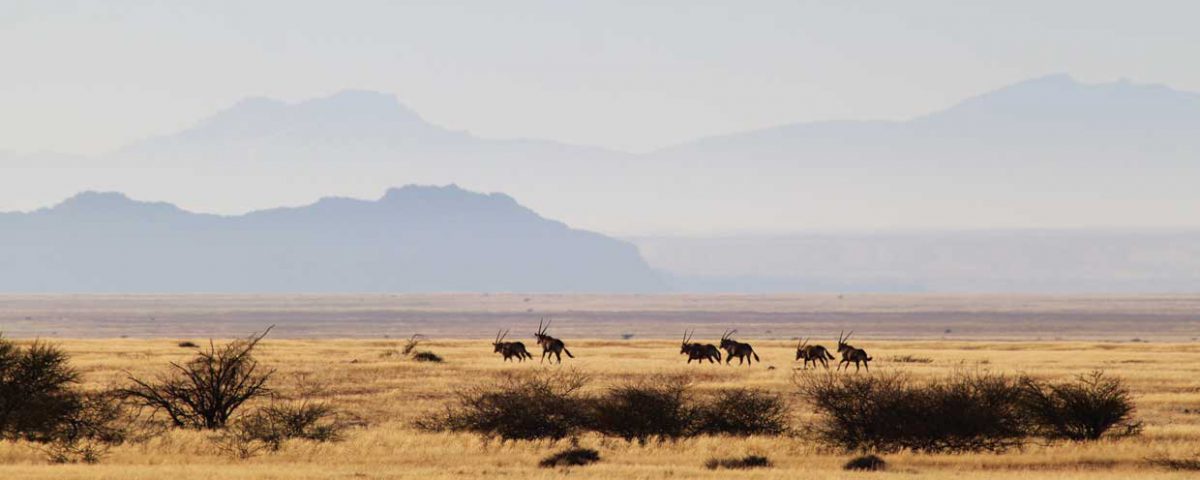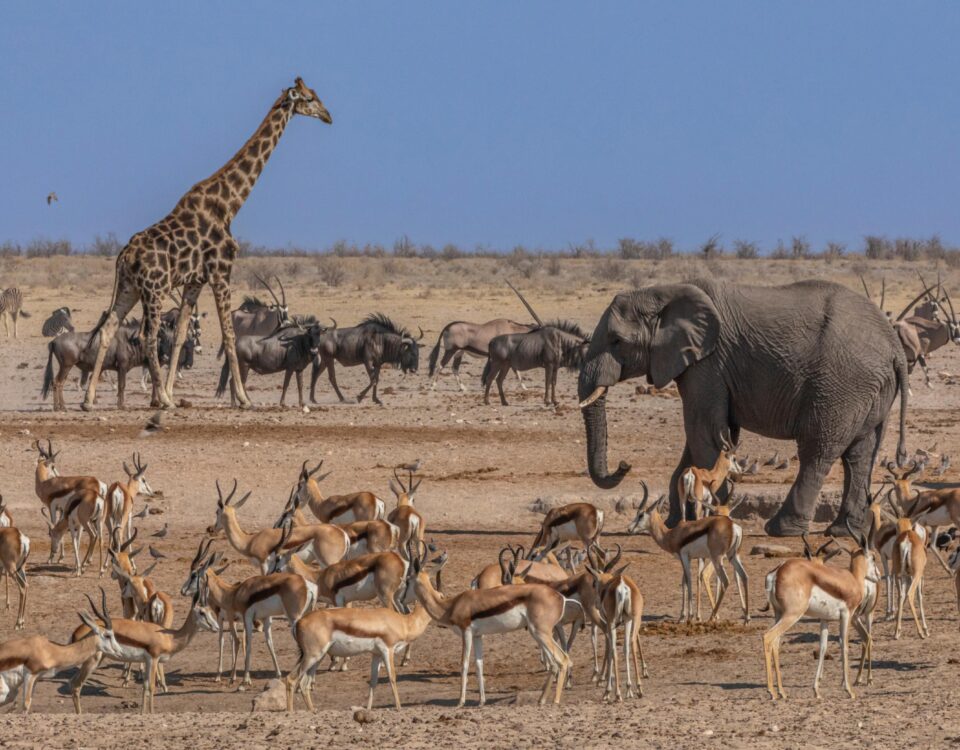
The growth and future of hunting in communal conservancies
June 13, 2016
Lucky 13 – Elephant hunt
June 13, 2016O ne thing is for sure: if there are rhinos in danger, Victor Katanga is likely to be on the scene. He is the MET ranger based in Uis and responsible for the Erongo region, but when there is a crisis somewhere, everybody steps in.
Katanga ticks off the recent incidents he attended: a white rhino on a private farm last year, a black rhino in the Puros conservancy and another in Etosha. Nothing is dearer to his heart than catching the criminals responsible, which brings him to another issue he cares about passionately: scene of crime protocol.
He relates how the first people on the spot in Etosha drove onto the scene of the crime, destroying tracks and other precious evidence. “Worse”, he says, “is that some of these people had been on a scene of crime course and should have known better.”
Katanga has come a long way from Shambyu, in Kavango East, where he grew up as a farmer’s son. Last year he did a course in scene of crime protocol, and now he trains MET rangers and conservancy game wardens.
Already as a boy Katanga had a passion for wildlife. He remembers seeing eland in the fields near his home and wondering about them. But there is more to conservation than protecting wildlife. It is about people and their relationship to natural resources. Looking at the harsh Kunene landscape, not yet greened by the dark clouds overhead, Katanga reminisces about his home area, where you can go into the bush and collect food, because the people conserve nature. When an opportunity arose to apply for a ranger position with the MET in 2004, he jumped at it.
First there was an induction course and later a law enforcement course.
It’s a topic he returns to: good training is vital for MET rangers and others fighting wildlife crime.
At Palmwag Lodge he looks the part, turned out in a smart uniform and driving a Land Cruiser. But much of his work is done on foot, he says, especially at full moon, when he parks the Cruiser, sets up a tent, and walks the veld to look for suspicious activity. He carries an R1 automatic rifle but has never shot at anyone in anger. He has spotted people who had no business to be in the bush at midnight, and they ran away. “Prevention is better than cure”, says Katanga, who likes to call himself Public Enemy Number One.
Public enemy to poachers, that is. Being on the ground, and being seen, is a big deterrent, especially if you have a reputation for catching poachers. Katanga has to rely on informers because Kunene and Erongo are vast areas. Catching a poacher at work is pretty unlikely, so following leads is the way to get hold of them.
Katanga remembers a leopard trapped by communal farmers. Their donkey had strayed onto a commercial farm where the leopard had killed it. They set a trap and caught the leopard, then shot it. Informers led Katanga to the hut where the leopard skin was hidden.
It seems fair to ask if the people did not have the right to protect their donkey. Katanga shakes his head. “First”, he says, “there is the law. They were on somebody else’s property. Secondly, they caught the leopard. They should have contacted the MET. We would have released it in a safer area.”
The MET is active on private farms as well as in communal areas and parks. Katanga has the keys to several farms that are rhino custodians. When he is around, he says, poaching decreases. Recently a commercial farmer in the Erongo region came across a poacher skinning an Oryx in broad daylight. Caution being the better part of valour, he did not approach but called Katanga, whose phone is on 24/7. By the time he arrived, the poacher was gone, but since then there have been no incidents on the farm.
So, what is needed – more boots on the ground? “Yes”, says Katanga, “but more than that: motivation, especially in communal areas.” He talks to the old conservationists and comes to the same conclusions as them – communal conservancies are a great thing, but they are run by committees; by people who do not go into the veld themselves, who do not relate to wildlife and the landscape. “You cannot understand the land from a car,” says Katanga. “You have to walk the land.”
But he is hopeful. The MET works well with NGOs like SRT, WWF & IRDNC. The Coastal Management project, NACOMA, gave Katanga a fridge for his car so that he can stay on patrol for longer.
And what does he wish for himself? Katanga is torn. He loves his life as a ranger. He has passed the hunting guide examination and will shortly take the professional hunter examination. It seems odd that an ardent conservationist may become a professional hunter, but Katanga sees no contradiction. Hunters shoot only a tiny percentage of animals on the land and their presence deters poachers. Legal hunting provides an income to communities, illegal hunting does not.
When then Prime Minister Hage Geingob addressed NAPHA, he remarked that it was an almost exclusively white organization. “What is important”, says Katanga, “is not whether Namibian hunters are black or white, but whether they have professional standards that set an example to the rest of Africa.”
Despite the dark clouds, as a hunter and a conservationist, Katanga wants to keep that standard high.
“As a boy, Katanga had a passion for wildlife. He remembers seeing eland in the fields near his home and wondering about them. “
Victor Katanga was the recipient of the 2014 Conservationist of the Year Award.
Napha gives this award to a person in the Namibian society, for his or her contribution towards conservation and the environment.
The first recipient of the Award in 2000, was Hanno Rumpf, Permanent Secretary in the Ministry of Environment & Tourism.

This article was first published in the HUNTiNAMIBIA 2015 issue.


